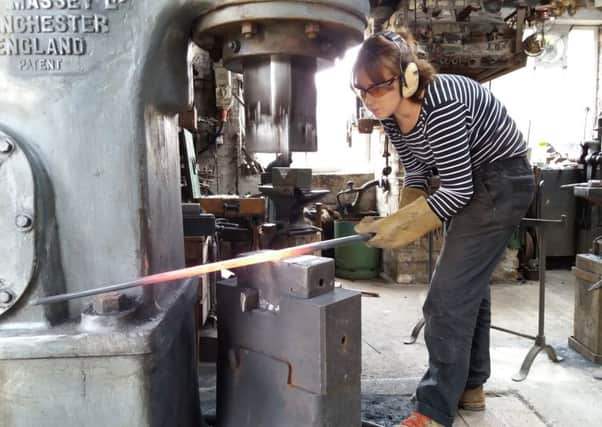The fourth generation forges on


The workshop of ‘anvilman’ Stephen Lunn is fascinating and terrifying in equal measures to an outsider
There are at least two heavy-duty pneumatic Massey drop hammers, which make such a noise that I have to cover my ears (Stephen usually wears ear defenders).
Advertisement
Hide AdAdvertisement
Hide AdWhen they are running the noise shakes you to the bone, but locals in Red Row take pride in their noisy neighbourhood Smithy.
J.S. Lunn & Sons has now entered its fourth generation on the same site in Red Row, near Amble, although the latest family member to devote her life to the trade is a daughter, not a son. Ashlee Donaldson is following in her great-grandfather’s footsteps, ensuring that traditional craftsmanship continues.
Throughout four generations, the job has altered significantly in order to survive and, through hard work, thrive. It was Jack Smith – Ashlee’s great grandfather and Stephen’s grandfather – who made the transition from drafted First World War farrier to a journeyman looking for work where it could be found, before purchasing the forge in Red Row from the Scott family (who had held the site for 200 years) in 1921.
In 1921 Jack mostly worked on shoeing horses; his son John Smith moved into farm machinery repairs and producing brackets for builders and the like; then brothers John and Stephen worked together from the mid-70s, at first with general blacksmithing and horse shoeing, before splitting into more creative practice.
Advertisement
Hide AdAdvertisement
Hide AdStephen took the more artistic jobs, while his late brother opted for those requiring structural engineering, such as roofs and bomb-blast windows.
Ashlee completed a degree in fashion marketing before retraining to work in the family business.
Stephen remembers attending wrought iron courses as a young man, but being uninspired by the processes of copying existing patterns and work. The lightbulb moment, he says, was realising that he could plan and create his own designs.
The British Artist Blacksmiths Association (BABA), founded 40 years ago, has played an important role in Stephen’s own career and in the revival of blacksmithing and its birth as an art form.
Advertisement
Hide AdAdvertisement
Hide AdExamples of the work created by Stephen and his daughter can be seen all over the North East. At Alnwick Gardens there are intricate iron gates inlaid with glass irises, there are residential properties along the coast with mermaid-clad balconies, and there are many public benches punctuated with the tell-tale motifs of crabs, seahorses and sea foam.
Stephen and Ashlee are currently working on a commission by Amble Town Council for a ‘peace sculpture’, which will stand in the town square next to the clock tower and war memorial. The sculpture will be unveiled in on Armistice Day.
When asked about his process, Stephen explains that he must have “an instant feel” before committing to a piece, and that it takes perseverance to work on a 500-600 hour job that only comes together when the multitudes of small, crafted components are combined towards the end.
He admits that building up a portfolio of work has taken many years, but since 1996 Stephen has talked and demonstrated around the world – America, Croatia, Japan and Russia.
Advertisement
Hide AdAdvertisement
Hide AdAnd daughter Ashlee is now a member of a highly skilled, close-knit, but global community of blacksmiths who have survived because they have blended traditional, ancient skills with artistic precision.
“Along the Northumberland coast, by the North Sea, a blacksmith shop beckons me,
“All black and dirty where no computer can go, delicate artworks blossom and grow...”
Stephen Lunn.